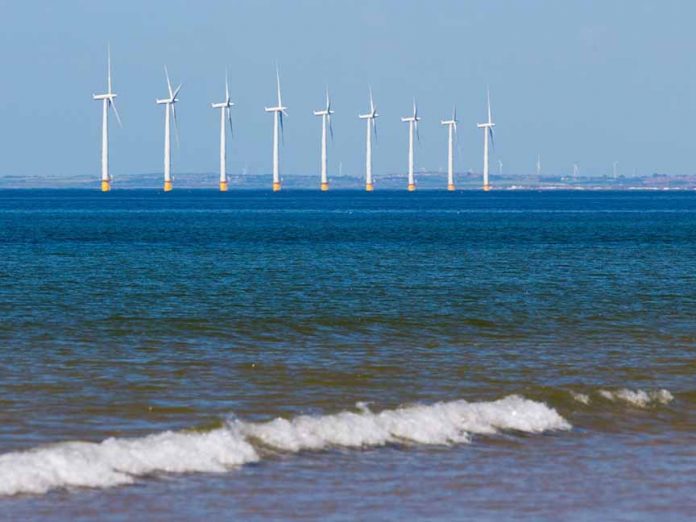By Stefanie Jackson – Gov. Ralph Northam’s 2050 goal for Virginia to be powered by 100% clean energy, including offshore wind, was not made before its potential effects on fishermen and marine life were studied, and the results were published in 2016.
Dominion Energy, based in Richmond, Va., will contribute to Northam’s goal by leasing 112,800 acres approximately 27 miles off the coast of Virginia Beach for an offshore wind project, the largest of its kind in the U.S.
The commercial lease area was selected by the U.S. Department of the Interior’s Bureau of Ocean Energy Management (BOEM) to maximize the area to be developed while minimizing space use conflicts and protecting ecologically sensitive areas.
In 2015, BOEM granted a lease to the Virginia Department of Mines, Minerals, and Energy to install two wind turbines with accompanying cables and operate them for research purposes.
From 2016 to 2018, Dominion Energy collected data from the commercial area it has leased since 2013. The lease area is in federal waters, which begin three miles from shore.
Also in 2013, the Mid-Atlantic Regional Council on the Ocean sought input from commercial fishermen in Virginia, Maryland, Delaware, New Jersey, and New York.
The Accomack-Northampton Planning District Commission sent surveys to about 200 Eastern Shore fishing permit holders. Of the respondents, most did not fish as far south as the Virginia Wind Energy Area (VWEA).
In March 2015, public input sessions were held in Wachapreague and on Chincoteague. Fishermen who looked for conch in the Triangle Wrecks area asserted that wind turbine construction should not coincide during the season from October to February.
They were also concerned about being permitted to continue crossing the area and that reports including data from 2011 to 2014 may have understated fishing activity.
The Northeast Fisheries Science Center of the National Oceanic and Atmospheric Administration studied data collected between 2007 and 2012 on federal permitted commercial fishing revenue and determined that the VWEA is “lightly fished.”
For example, Chincoteague earned about $800 annually from fishing in the VWEA, compared to its annual total port revenue of more than $3.1 million.
There was also outreach to members of the recreational fishing community, such as the Eastern Shore Angler’s Club. Anglers often like to fish around the wrecks and artificial reefs in the VWEA.
Anglers were “excited” that the wind turbines would create additional vertical structures in the area but were concerned that access to the area might be limited. One angler said losing just one day of fishing would be “unacceptable.”
Using public input, BOEM developed best management practices (BMPs) for mitigating conflicts between wind energy developers and fishermen.
There are five BMPs for communication, project design and construction, access and navigation, environmental monitoring, and mitigation.
The environmental monitoring BMP was written for inclusion in a plan to be used by the wind energy developer, in this case, Dominion Energy.
BMP requirements include conducting pre-construction surveys of baseline conditions in the water, such as the abundance of fish species and their migratory patterns.
Both commercial and recreational fishermen noted concerns over the possible impacts of AC and DC electromagnetic fields on migratory fish and other marine life.
Water currents and flow, noise and vibrations created by wind turbines, and other topics are to be studied by the developer.
Concerns were also expressed that storm events or routine sediment movement could expose cables, which will be buried two meters deep.
The environmental monitoring plan is to be written with input from numerous research institutions including the Virginia Institute for Marine Science, the University of Virginia, and Virginia Tech.
The developer is also required to cooperate with government entities including the U.S. Coast Guard, the Virginia Marine Resource Commission, and the Virginia Department of Environmental Quality.



